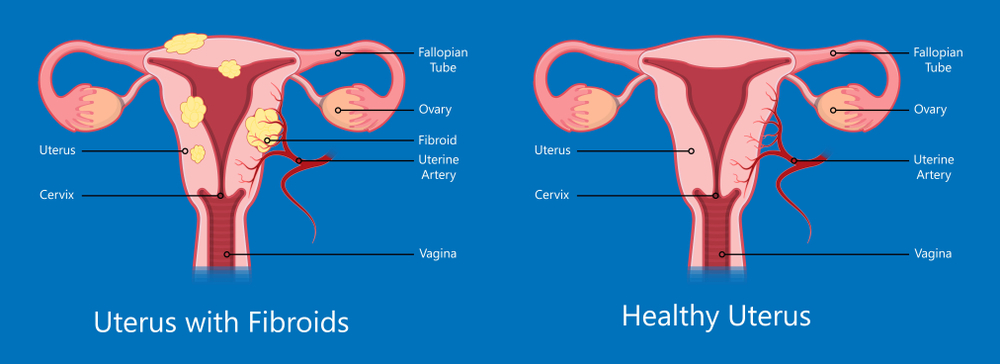Myomectomy
Myomectomy is a surgical operation that is used to remove uterine fibroids, also known as leiomyomas. Uterine fibroids are common noncancerous growths that appear in the uterus usually during the childbearing years. They can appear inside or outside your uterus. It has, however, been reported to occur at any age. The aim of a myomectomy is to remove the leiomyomas while preserving the uterus. This ensures that women who wish to have children can still give birth following the procedure. Read More
Top Doctors For Myomectomy Treatments
Top Hospitals For Myomectomy Treatments
Myomectomy
Introduction
Myomectomy is a surgical operation that is used to remove uterine fibroids, also known as leiomyomas. Uterine fibroids are common noncancerous growths that appear in the uterus usually during the childbearing years. They can appear inside or outside your uterus. It has, however, been reported to occur at any age. The aim of a myomectomy is to remove the leiomyomas while preserving the uterus. This ensures that women who wish to have children can still give birth following the procedure.

Indications
A myomectomy is indicated in the following cases:
- Women who wish to have children in the future but suffer from leiomyomas.
- In women with menorrhagia or heavy menstrual bleeding.
- Deformities of the endometrial cavity.
Contraindications
- Endometrial cancer or uterine sarcoma. This is because the procedure increases the chances of spreading cancer than resolving the condition.
- In women over childbearing age or women who do not wish to give birth. Leiomyomas can reoccur even after successful surgical removal and as such, a hysterectomy is preferable.
- Pregnant patients: A myomectomy may lead to a miscarriage or abortion in pregnant women and so is not advised.
Types of Myomectomy
There are different techniques used to perform a myomectomy. These are dependent on the size, number, and location of the fibroids. It could be an abdominal myomectomy, a laparoscopic myomectomy, or a hysteroscopic myomectomy.
Abdominal Myomectomy
This is known as an open myomectomy, and this is a major surgical procedure. The fibroids from the uterine wall must be removed by making a bikini cut through the skin on the lower abdomen. After that, multiple layers of stitches are used to reconstruct the uterine muscle. It is also important to note that new fibroids may develop, resulting in recurrent symptoms and additional procedures.
Laparoscopic Myomectomy

This is a minimally invasive procedure in which the uterus is examined through very small incisions using a laparoscope. Compared with women who have a laparotomy, this procedure has lesser complications and recovery time is quicker. Due to the incision size, morcellation (cutting into pieces) of the fibroid may be necessary. In this procedure, abdominal expansion is achieved through the introduction of carbon dioxide gas.
Robotic myomectomy
As with the laparoscope myomectomy, the incisions are smaller and minimal. However, the instruments are controlled by the surgeon through a single console. Robotic surgery may take longer and be more costly than a laparoscopy, but the outcomes do not differ.
Single port myomectomy
This surgery uses only one opening near your belly button for all surgical instruments. This causes a slightly larger incision in your belly button but no other incisions on your abdomen, unlike in laparoscopy or robotic surgery. There may be morcellation of the fibroid if it is large.
Hysteroscopic Myomectomy

This procedure involves the removal of the leiomyomas through the insertion of the instruments into the vagina and cervix. This method is suitable for submucosal fibroids only. It employs the use of a resectoscope or a hysteroscopic morcellator to excise the fibroid. It is necessary to inject sterile saline into the uterus to enable proper visualization.
Colpotomy
This involves the removal of the fibroid through a vaginal incision. However, this is a rare procedure.
Procedure
The first part of the surgical procedure involves a physical examination and laboratory work. Diagnostic aids such as x-rays, MRIs, or ultrasounds may also be carried out. This helps to rule out the possibility of uterine cancers and other conditions. It also helps to determine the size and location(s) of the growth.
A blood transfusion may be required during the surgery due to excessive blood loss. The procedure is usually performed under general anesthesia for the laparoscopy, abdominal, and sometimes hysterectomy myomectomy or spinal for the minimally invasive ones. With the exception of laparotomy, the other techniques are performed as outpatient procedures and do not require hospitalization.
Postoperative management involves resting, pain medications, and wound dressing. Preoperative antibiotics may also be prescribed.
Complications of Myomectomy
Myomectomy has a low complication rate. Despite its relative safety, several operative and postoperative complications may arise. These risks include:
- Excessive blood loss: Due to increased menstrual flow, most women with fibroids have a low platelet and erythrocyte count. This means that blood transfusion may be required during the procedure especially if it is a highly invasive technique like the abdominal myomectomy.
- Scar tissue: Adhesions can result from uterine incisions made to remove fibroids. These bands of scar tissue may develop after surgery and can lead to inflammation and other complications like decreased mobility around affected tissues. Compared to abdominal myomectomy, laparoscopic myomectomy might cause fewer adhesions. (laparotomy).
- Pregnancy or childbirth complications: A myomectomy may raise some risks related to delivery after pregnancy. A cesarean section (C-section) may be recommended to avoid rupture of the uterus during labor. This is a very rare complication of pregnancy. However, the depth and location of the leiomyoma are related to this complication. Fibroids themselves are also associated with pregnancy complications.
- Rare chance of hysterectomy: On rare occasions, surgical and post-surgical complications can lead to the removal of the uterus. This may be necessary if bleeding is uncontrollable or other abnormalities are found in addition to fibroids.
- Chances of spreading a cancerous tumor: If a tumor is mistaken for a fibroid, there is a high risk of spreading it inadvertently during morcellation.
- Infection: Post-surgical infection can arise due to several causes. It may be prevented or resolved through the use of antibiotics. More severe infections may result in surgical management.
- Damage to the uterus and adjacent organs: There is a possibility of damage to the uterine wall or nearby organs. This would require further surgical revision and correction.
Conclusion
Despite the success of myomectomy, new fibroids may grow after a successful procedure. This risk is higher in younger women (women less than 40 years of age) than in menopausal women. In cases where there is regrowth repeatedly, a hysterectomy may be indicated. The Food and Drug Administration (FDA) issued a warning against using a laparoscopic power morcellator for the majority of myomectomy patients in 2014. It is necessary to revise the possible drawback of each technique with the physician prior to the surgery.






















































































































































